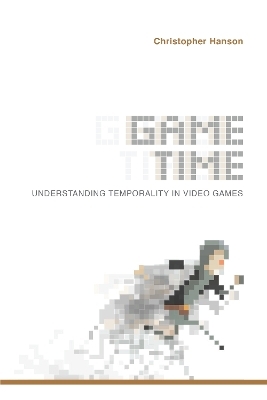
Game Time
Understanding Temporality in Video Games
Seiten
2018
Indiana University Press (Verlag)
978-0-253-03278-2 (ISBN)
Indiana University Press (Verlag)
978-0-253-03278-2 (ISBN)
- Lieferbar (Termin unbekannt)
- Versandkostenfrei innerhalb Deutschlands
- Auch auf Rechnung
- Verfügbarkeit in der Filiale vor Ort prüfen
- Artikel merken
Preserving, pausing, slowing, rewinding, replaying, reactivating, reanimating Has the ability to manipulate video game timelines altered our cultural conceptions of time?
Video game scholar Christopher Hanson argues that the mechanics of time in digital games have presented a new model for understanding time in contemporary culture, a concept he calls "game time." Multivalent in nature, game time is characterized by apparent malleability, navigability, and possibility while simultaneously being highly restrictive and requiring replay and repetition. When compared to analog tabletop games, sports, film, television, and other forms of media, Hanson demonstrates that the temporal structures of digital games provide unique opportunities to engage players with liveness, causality, potentiality, and lived experience that create new ways of experiencing time
Featuring comparative analysis of key video games titles—including Braid, Quantum Break, Battle of the Bulge, Prince of Persia: The Sands of Time, Passage, The Legend of Zelda: The Ocarina of Time, Lifeline, and A Dark Room.
Video game scholar Christopher Hanson argues that the mechanics of time in digital games have presented a new model for understanding time in contemporary culture, a concept he calls "game time." Multivalent in nature, game time is characterized by apparent malleability, navigability, and possibility while simultaneously being highly restrictive and requiring replay and repetition. When compared to analog tabletop games, sports, film, television, and other forms of media, Hanson demonstrates that the temporal structures of digital games provide unique opportunities to engage players with liveness, causality, potentiality, and lived experience that create new ways of experiencing time
Featuring comparative analysis of key video games titles—including Braid, Quantum Break, Battle of the Bulge, Prince of Persia: The Sands of Time, Passage, The Legend of Zelda: The Ocarina of Time, Lifeline, and A Dark Room.
Christopher Hanson is Assistant Professor of English at Syracuse University with a background in video game and software development.
Acknowledgments
Introduction
1. More than Live: Game "A-liveness" and Immediacy
2. Game Presence and Mediatization
3. Pausing and Resuming
4. Saving and Restoring
5. An Instinct towards Repetition: "Replay Value," Mastery, and Re-Creation
6. Recursive Temporalities
7. Case Studies
Conclusion
Gameography
Filmography
Bibliography
Index
| Erscheinungsdatum | 19.04.2018 |
|---|---|
| Reihe/Serie | Digital Game Studies |
| Zusatzinfo | 53 Illustrations, black and white |
| Verlagsort | Bloomington, IN |
| Sprache | englisch |
| Maße | 152 x 229 mm |
| Themenwelt | Sport ► Ballsport ► Basketball |
| Informatik ► Software Entwicklung ► Spieleprogrammierung | |
| ISBN-10 | 0-253-03278-4 / 0253032784 |
| ISBN-13 | 978-0-253-03278-2 / 9780253032782 |
| Zustand | Neuware |
| Haben Sie eine Frage zum Produkt? |
Mehr entdecken
aus dem Bereich
aus dem Bereich
die 365 besten Übungen
Buch | Softcover (2024)
Copress (Verlag)
24,90 €
Technik, Taktik, Training, Methodik
Buch | Softcover (2024)
Meyer & Meyer (Verlag)
32,00 €


